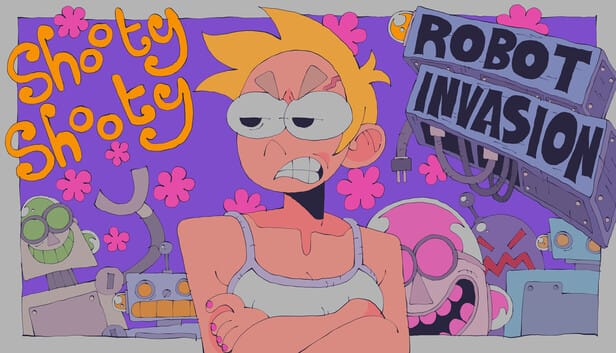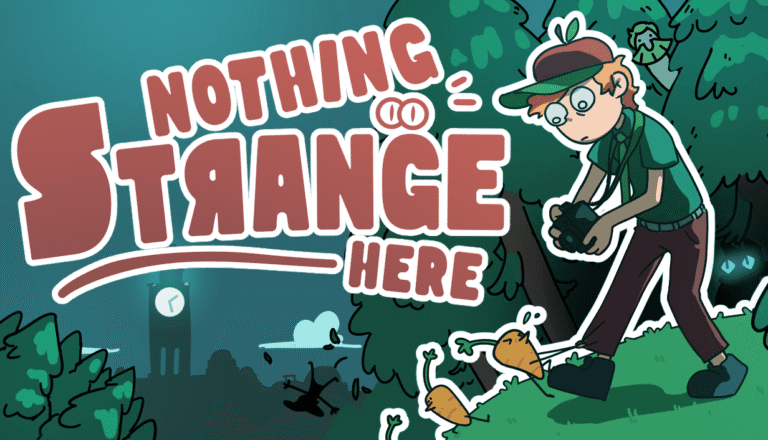
There’s something beautifully unhinged about a game that opens with you literally ripping the digital soul out of a robot and hurling it at another robot’s face. Metal Eden doesn’t waste time with pleasantries; it drops you straight into the orbital city of Moebius with nothing but a grappling hook, an attitude problem, and the kind of movement system that makes standing still a death sentence. After spending quality time with Reikon Games’ latest offering on PC, I can confidently say this is what happens when someone takes the aggression loop of DOOM 2016 and gives it cyberpunk parkour superpowers.
What is Metal Eden About?
Metal Eden is a first-person shooter that wears its DOOM influences proudly while carving out its own niche in the crowded boomer shooter renaissance. Set in a future where humanity’s consciousness has been digitized into storage devices called “Cores,” the game plunges you into the role of Aska, an advanced Hyper Unit android powered by forbidden Phantom Core technology. Your destination? Moebius, a vast monolithic orbital city that was supposed to be humanity’s salvation but has instead become a mechanical nightmare crawling with the Internal Defence Corps.
The premise revolves around these Cores digital containers holding human consciousness that have become both the key to humanity’s survival and the centerpiece of your combat arsenal. You’re not just fighting robots; you’re fighting for the very essence of what makes us human, one ripped-out core at a time. It’s cybernetic warfare meets existential crisis, wrapped up in a package that prioritizes kinetic action over philosophical naval-gazing.
Digital Souls in a Mechanical Hell
Metal Eden’s narrative takes place across the brutalist environments of Moebius and the mysterious world below called Vulcan. As Hyper Unit Aska, you’re engaged in an ongoing conflict over the consciousness of a lost human colony, accompanied by a sentient spaceship called Nexus that gradually reveals more about your world and purpose. The game explores themes of consciousness and identity through environmental storytelling rather than lengthy exposition dumps, letting the derelict orbital city’s architecture tell much of the story.

The campaign is structured around eight futuristic levels that blend linear progression with rewarding exploration. While the core path keeps you moving at breakneck speed, looking behind boxes or down side hallways often reveals weapon upgrade points and extra lives. The designers seem keenly aware of pacing, keeping most hidden loot fairly accessible so you can get back on track quickly without breaking the game’s relentless momentum.
Rip, Tear, and Wall-Run
But let’s be honest you’re not here for Descartes with a cyberpunk coat of paint. You’re here to move fast and break things, and Metal Eden delivers on that promise with the kind of kinetic energy that makes your reflexes work overtime.
The core-ripping mechanic is genuinely brilliant in its implementation. Once an enemy’s armor is depleted, you can extract their Core and either throw it at other enemies for AoE damage that can trigger chain explosions, or consume it for health restoration and a temporary boost to melee damage and movement speed. This creates a risk-reward system that encourages aggressive play you need to get close to vulnerable enemies, but the payoff provides crucial survival tools and offensive options
The three-branch skill tree meaningfully enhances these mechanics, with the Core tree adding chain explosions and wider blast radii, the Weapon tree providing alt-fires and better ammunition efficiency, and the Mobility tree extending dash charges and movement capabilities. Each upgrade path genuinely impacts how you approach combat encounters, making character progression feel substantial rather than superficial.

Movement is where Metal Eden truly shines. Aska’s toolkit includes wall-running, dashes, limited-fuel jetpacks, and a grappling hook that creates genuine tactical options. Your base movement speed is already equivalent to an all-out sprint in most games, which can be enhanced further through wall-runs, dodges, jump pads, and zipline sequences built into levels. You can even transform into an armored “Ramball” for certain sections, rolling through environments at super speeds.
The comparison to DOOM 2016 is inevitable and largely accurate both games understand that standing still means death, and both reward players who treat aggressive movement as their primary survival tool. The arena-style encounters funnel you into self-contained combat bowls with ammo and health resupply nodes on cooldown timers, encouraging you to cycle through different areas while managing resources.
The Good, The Bad, and The Brutally Honest
Pros:
- Core-ripping mechanic is both unique and perfectly integrated into the combat flow
- The movement system feels incredible, with responsive controls that make parkour combat genuinely enjoyable.
- Excellent visual design powered by Unreal Engine 5 creates impressive and immersive environments.
- Arena-based encounters maintain consistent challenge without feeling unfairyoutube
- Three-branch skill progression meaningfully impacts gameplay approaches
- Strong performance on PC with reasonable system requirements
Cons:
- Campaign clocks in at only 4-6 hours with limited replay incentives
- Only two legitimate boss encounters across the entire experience
- Arena-based level design can feel repetitive despite solid combat mechanics
- $39.99 launch price raises value questions for the content amount
- Some players report occasional performance dips during intense sequencesyoutube
Who is Metal Eden For?
Metal Eden is tailor-made for fans of the modern boomer shooter revival who want something with more mechanical depth than your typical run-and-gun affair. If you’ve been craving something that captures the kinetic energy of DOOM 2016 while adding its own unique twist through the core-ripping system, this absolutely delivers on that promise.
It’s also perfect for players who appreciate games that respect their intelligence Metal Eden never holds your hand through combat encounters or oversimplifies its mechanics. The difficulty curve challenges without punishing, making it accessible to newcomers while providing enough depth for genre veterans who want to master its movement and combat systems.youtube
However, if you’re looking for a lengthy single-player campaign or extensive replay value, you might want to adjust expectations. This is a game that prioritizes a focused, high-quality experience over padding content to justify longer playtimes.
Short, Sweet, and Surprisingly Soulful
Metal Eden succeeds because it understands what makes this genre special and executes those elements with precision and style. The core-ripping mechanic alone justifies the game’s existence, providing a fresh take on first-person combat that feels natural rather than gimmicky. When combined with fluid parkour movement and arena encounters that reward aggressive play, it creates moments of genuine flow-state gaming that remind you why movement shooters became popular in the first place
Yes, the campaign is shorter than many players might prefer, clocking in at 4-6 hours depending on your exploration thoroughness. And yes, at $39.99, the price-to-content ratio will give some buyers pause. But when Metal Eden hits its stride when you’re wall-running through firefights, ripping cores from enemies and turning them into weapons while death metal pounds in your ears it achieves something genuinely special in the current gaming landscape.
Score: 4.7/5
Metal Eden might not be the longest game in your library, but it’s almost certainly going to be one of the most kinetic. In an industry often obsessed with bloated open worlds and hundred-hour campaigns, there’s something refreshing about a game that knows exactly what it wants to do and executes it with style, substance, and more than a little digital soul even if it occasionally rips that soul out and throws it at your enemies.
This review of Metal Eden is based on the PC version, with a code provided by the game’s developers.


